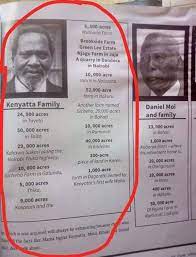When a Mubukusu tribesman or woman speaks; they begin by mentioning two things: Khukhwitacha (declaring one’s personal ancestry and clan peculiarities) and Khukhwilaa (declaring the clan origin and ancestry). It is through khukhwilaa that we can find the person’s Ebulobi (cluster) and silibwa (the gate).
For instance, Ese Wefwafwa wa Nangami, omusituyi omusilikwa njoboyi Namurwa, simatwa, kikayi, banianiambi basilamatakho, khwama Embayi khwecha ne chikhendu Sikala
[I am Wefwafwa, grandson to Nangami. I am Omusituyi (clan). I am Omusilikwa of Bakikayi Cluster. We walk cheerfully. We came from Embayi carrying raffia palms – showing immense cattle wealth]
Important to note self- introduction was used for several reasons; avoiding relatives falling in love, detecting an unfriendly alien (who was unable to introduce) and thirdly to introduce people at public gatherings such as funerals or dance sessions
Back to our point, among the Babukusu of the Luyhia Nation, there are several clusters. A cluster (or Ebulobi on local dialect) is a grouping of clans who share some peculiarities (commonness) such a related a common ancestor or sharing similar ancient practices).
Silibwa refers to sub-clan division such as Bamunaa among Baneala; Bamweya (Balukulu and Bamweya Bemwalo), Babuya (Bamwonja, Basikulu, Baolo and Bakhufwe): and Batukwiika (Banamboobi, Baluchekhe, Babasaakha, Baluleti and Bakwangwa) and so on.
And then, there are six main oaths (bibiilao) that accompany the cluster classifications. The infinite wisdom of gradually dying names the oaths as Namurwa, Munyole, Naluwa and Nawanga. Every cluster subscribes to specific sisilao that the people invoke depending on historical accounts when the occasion demands:
For instance:
1. Bamwalie and Basilikwa invoke the oath of Namurwa (Remember Namurwa was the name of a beautiful Nilo-Hamitic bride who came to be the mother of Mubukusu and Mukisu. Her name pertains to ‘invader’ and she was married from Barwa at time of peace – the Kalenjin who were a close companion but sworn enemy of Babukusu in the migration pattern). From their sojourn at Esilikwa the two clusters have been associated with Barwa communities (Bakinisu, Bayobo, Baruku and Bakisila among others), even adapting some Barwa who came to form Bukusu clans...for example, Batolometi (Tolomet) and Baluleti (from Naluleti – Tukwiika’s Omurwa wife).
The clans under Bamwalie and Basilikwa evoke pride from economic wealth in crops and cattle as well as steadfast grasp of traditions such as circumcision and heroism after bravely losing a major war in Esilikwa.
Bamwalie Clans here include: Bakusi, Bakhone, Basefu, Barefu, Basonge, Babangachi, Bang’oma, Bakoyi, Bakolati, Batolometi, Bakamukong’i, Bakamutebi, Bakinisu, Bahabiya, Basang’alo, Bamakina, Bawayila, Bamakhuli, Bayumbu, Basaniaka, Banyangali, Baengele, Basaniaka, Basamba, Basamo, Babichu, Balukulu, Bakobolo, Babichu, Bamakhuli, Bamacharia, Bamalicha and lately Basonge who borrowed khulicha customs.
Note: All clans aligned to Bamwalie take the secret oaths and claim to uncanny (strange/mysterious) powers....Chikholo chilicha
Basilikwa Clans include: Bakimweyi, Batukwiika, Bakimweyi, Babuulo, Bakiyabi, Basefu, Bachemayi, Bakolati, Babiichachi, Babambo, Batilu, Basimisi, Barwa, Basibende Baliango, and Bakimepuli.
2. Bamalaba, Banaela and Banabayi invoke the oath of Munyole
Bamalaba’s origin is traced to Malaba son of Sioka. Malaba (who was probably so good and was assumed as a saint or god) is mentioned on Bukusu Divine Trinity. At the top rests Wele Khakaba (Supreme Being/provider), then Wele Mukhobe (God the Light) and Wele Malaba (God the Protector). Bamalaba came through Bugishu then Samoya then to Bukaya. They provide on Munyole who joined Mango alongside Muyobo and Muyobo in new birth of circumcision after the fall of the snake dragon (Yabebe)
Clans under Bamalaba include: Baala, Balwonja, Baafu, Bayemba, Bayundo, Basakali, Baliuli, Bakuta, Babaasaba, Bakuunga, Bakhwami and Bakhonjo.
Then, Banabayi are forerunners of Bamalaba moving to Embayi. They are highly respected communities who were entitled to khukhwaya babandu (shepherds of the community). The name Babayi refers to a herder or shepherd. If the community sought blessings, Omunabayi would come forth, spear the earth and take a heap of soil , look upwards ask for blessings. They would also make herbs for protecting kamatala (cattle shades) and they would prosper greatly. Today, if you buy a new car, land, livestock or even receiving a child, do not hesitate to call Omunabayi; they have a special touch of blessing others.
Clans under Banabayi include: Basombi, Bayaya, Baumbwa, Basiime, Baleyi, Batecho, Basekese, Balisa, Basime, Bamwaya, Baleyi, Bakangala, Basichongoli, Balunda, Baumba and finally Bayiitu.
Thirdly, Baneala came to settle at Neala Hills after Bukusu clans lost in war at Esilikwa. They proceeded to settle at Mwaila which is the present day Amukura in Busia County
Baneala clans include: Batakhwe, Bameme, Batakhwe, Bakongolo, Bakisyayi, Bamunaa, Bachibino and finally Bakhurarwa (the clan of Mango, the snake slayer and circumcision reformer)
3. The Bakikayi Cluster invokes both Naluwa and Nawanga. It means that Bakikayi are classified into Bakikayi I (aligned to Naluwa) and Bakikayi II (invoking Nawanga)
From Silikwa, Bakikayi came through Kikayi Hills. They are the latest entrants in Bukusu land, long after Bakikayi and Bamalaba. Bakikayi I sojourned at Muluwa Hills (hence the allegiance to Naluwa oath). They include clans such as Bamuki, Balako, Basituyi, Bamuyonga, Bachemwile, Bakokho, Batemulani, Bakisebe, Bakhoma and Bamusomi.
Then Bakikayi II paying the allegiance to Nawanga oath had in their migration moved southward residing in the confines of Enyanja ya Walule (which the white explorer renamed Lake Victoria after the queen of England). Some clans here adopted much form Bakhayo, Basamia, Banyala and Bawanga who live in their reaches. Clans belonging to this cluster include Bakwami, Bamukoya, Baechalo and Basibacho. Some accounts classify Batura here, given their power to make rain.
4. Baumbwa, having the power to conjure with ogres (khusolosia kamang’u) acknowledge the Munyole oath.
The tale of chibololi (clusters) and bilibwa (gates) is one of outstanding beauty and unity in diversity. It is such knowledge that present generations need to grasp well, so as to pass on to coming generations.
A story is good, until another one is told...












Comments